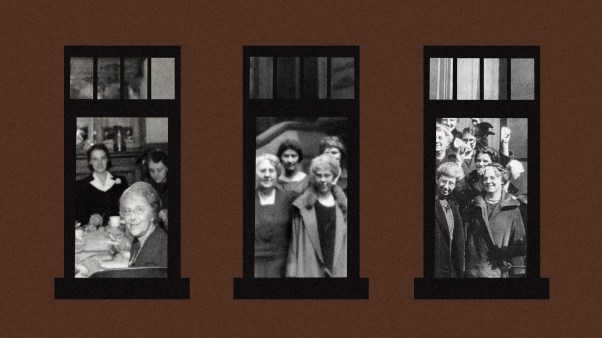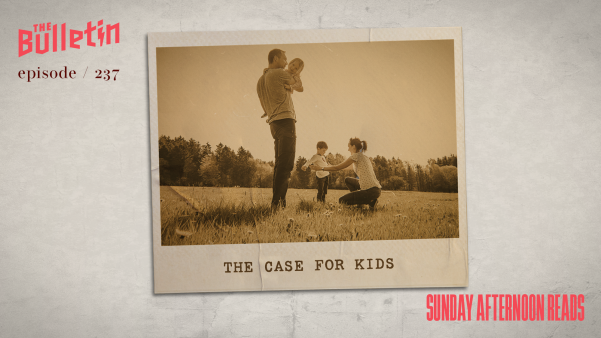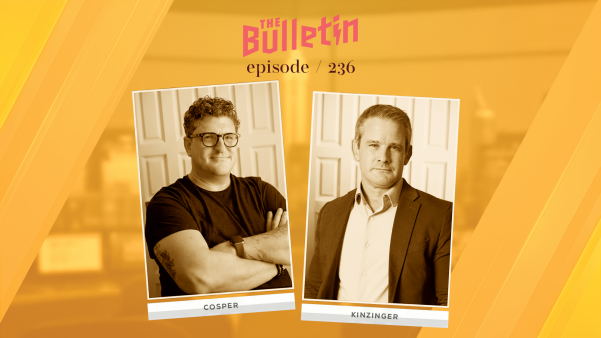“Will there be harps in heaven?” Each year in my capstone course for senior computer science students, I ask them this question. Yes, many reply.
But when I ask, “Will there be computers in heaven?” or “How about AI?” students are not so sure. Many, in fact, are convinced that computers will not be present in eternity. Why would we need them? The usefulness of their degrees seems limited to this life only; a music major is apparently more durable for the next.
Yet harps and computers are both cultural artifacts. So how do we discern what will persist?
I pose this question not only to generate lively debate but also to unlock key biblical assumptions about culture and technology within the arc of the biblical story—a story that begins with creation and ends with a new creation.
To determine whether there may be AI in heaven, we need to go back to the beginning. Creation is much more comprehensive than what we might call “natural things”; it also includes those things’ latent potential.
Already in Genesis 4, we see people uncovering some of the possibilities in creation: people like Jubal, the father of those who play harp and flute, and Tubal-Cain, who forges tools out of bronze and iron (perhaps one of the first engineers in the Bible). Over time, creational possibility has expanded to include poems and pancakes, beer and banjos, airplanes and art—and artificial intelligence.
Artificial intelligence arises directly from the marvelous structure of reality. The positioning of petals on a flower, the movement of traffic, the rhythm in music, the arrangement of DNA, and changes in weather all follow mathematical and statistical patterns. The advent of the computer (another creational possibility) provides a tool capable of processing large amounts of data and detecting these patterns. ChatGPT, which trains on text in order to output a statistically plausible sequence of words, is only possible due to the patterns in God’s good creation.
But since the Fall, “the whole creation has been groaning” (Rom. 8:22). The effects of sin are intertwined with all of our cultural and technical activities—including AI. Bias creeps into systems. Chatbots can be deployed to promote propaganda and disinformation. Problems with AI do not arise from defects in creational possibilities but rather from a misdirection of these possibilities.
Sin also impacts the human heart, and we are continually tempted to place our trust in what’s created rather than in the Creator. Take the 2023 manifesto by Marc Andreessen—early web pioneer and Silicon Valley venture capitalist—titled “Why AI Will Save the World.”
This kind of thinking is sometimes referred to as “technicism,” the belief that technological progress will solve all our problems. Andreessen suggests that in the new AI era, every child will have “an AI tutor that is infinitely patient, infinitely compassionate, infinitely knowledgeable, infinitely helpful,” just as “the creative arts will enter a golden age.” AI will help us tackle challenges from “curing all diseases to achieving interstellar travel.”
Some take this view further by promoting effective accelerationism, advocating unrestricted technological progress so AI can more rapidly solve humanity’s problems. The question is not whether AI will be in heaven. Rather, AI is the path to heaven or to some other utopia.
Dataism is another computer-scientist pitfall—the reductionist notion that all created reality is nothing but information. Yuval Noah Harari describes dataism as the view that “organisms are algorithms, and that giraffes, tomatoes and human beings are just different methods for processing data.” Rather than seeing data as simply one aspect of creation, it’s elevated to an independent entity upon which everything else depends, assigned a sort of divine status.
Some thinkers argue that by preserving data, we can overcome the problem of death; someday we’ll download our “mindfile” into a computer and live indefinitely in a virtual paradise.
In his latest book The Singularity Is Nearer: When We Merge with AI, well-known computer scientist and futurist Ray Kurzweil suggests we are entering the last phase of human transformation, “reinventing the intelligence that nature gave us on a more powerful digital substrate, and then merging with it.” In his seminal earlier book The Age of Spiritual Machines, Kurzweil predicted that “there won’t be mortality by the end of the twenty‐first century.” AI is not something in heaven. Merging with AI is heaven itself.
Trust in the power of data is also behind the emerging “digital afterlife” industry. “Griefbots” use left-behind emails, messages, and voice recordings to simulate the patterns and personality of dead loved ones, allowing the bereaved to continue conversing with a simulation. Others are developing AI companions, pastors, and therapy bots.
But data is only an echo of one aspect of a person’s life. It is decidedly not the entire person. Writer Andy Crouch describes fully flourishing humans as “heart-soul-mind-strength complexes designed for love.” Our being “fearfully and wonderfully made” (Ps. 139:14) in the image of God cannot be reduced to a machine that mimics minds.
The biblical story does not end with the Fall. In the fullness of time, Christ came to bring redemption, which is not only personal but involves God’s plan to “reconcile to himself all things” (Col. 1:20) on a universal scope. In the words of theologian N. T. Wright, “creation is to be redeemed; that is, space is to be redeemed, time is to be redeemed, and matter is to be redeemed.” God calls us to participate in this work as agents of reconciliation (2 Cor. 5:18–19) promoting renewal in all things—including AI.
In practice, this entails shaping responsible AI guided by wisdom, justice, and stewardship—perhaps directing the technology to increase crop yields, reduce traffic crashes, analyze medical images, enable new drug discoveries, solve protein-folding puzzles, and accelerate Bible translation. Having played with the mathematics of machine learning, I can attest to the delight of uncovering creational patterns, much as an astronomer finds joy in identifying new comets in the cosmos.
The biblical story ends with that wonderful vision in which Christ comes again to make all things new. However, engineers and computer scientists must keep in mind that the builder and architect of the new heavens and earth is God, not themselves (Heb. 11:10). The New Jerusalem comes down out of heaven (Rev. 21:2)—it is not subcontracted to us. God’s plans do not depend on our clever AI, nor can a powerful rogue machine derail his plans.
In the good world to come, we will not be disembodied souls or reduced to celestial data but rather given new bodies on a new earth. In 1 Corinthians 15 we read that “in a flash, in the twinkling of an eye, at the last trumpet” we will be “raised imperishable” (v. 52). We will live with Christ in his new creation, not flattened to the realm of data but physically resurrected into a many-splendored world free of sin.
The biblical story begins in a garden and ends in a city, which theologian Richard Mouw suggests indicates a “continuity between our present lives as people immersed in cultural contexts and the life to come.” Mouw points to Isaiah 60, which describes animals, precious metals, and lumber being brought into Zion. There is even mention of the “ships of Tarshish” employed for the “honor of the Lord your God” (v. 9). These “instruments of pagan commercial power,” Mouw writes, were “made into fitting vessels of service for the Lord and his people.”
Likewise, in Revelation 21, we read of the new heavens and earth and how the kings of the earth “will bring their splendor” along with the “glory and honor of the nations” (vv. 24–26). Is it possible that modern artifacts of pagan commercial power might find their way there too? Floating alongside the ships of Tarshish, might we see aircraft carriers? Maybe drones flying overhead, all directed to the honor of God?
Merging with AI is not heaven, nor is AI the path to heaven. But will there be AI in the new heavens and earth? If the “all things” being reconciled is indeed comprehensive, it follows that it will include all creational possibilities.
We don’t know what that will entail. In my imagination, I picture sin-free computers assisting us to delight in the beauty and complexities of the patterns in the new creation, or perhaps put to more practical uses in the running of the new city.
Theologian Albert Wolters wrote that “there is no reason to doubt that computer technology and jazz music will survive, largely intact, in the future restored earth.” Admittedly, this is a matter of speculation. But I like to think that, yes, both computers and AI will be there, somehow put in loving service to God. I suspect that, along with jazz music, harps will be there too.
Derek C. Schuurman is professor and department chair of computer science at Calvin University in Grand Rapids, Michigan. He is the author of Shaping a Digital World and co-author of A Christian Field Guide to Technology for Engineers and Designers.





















